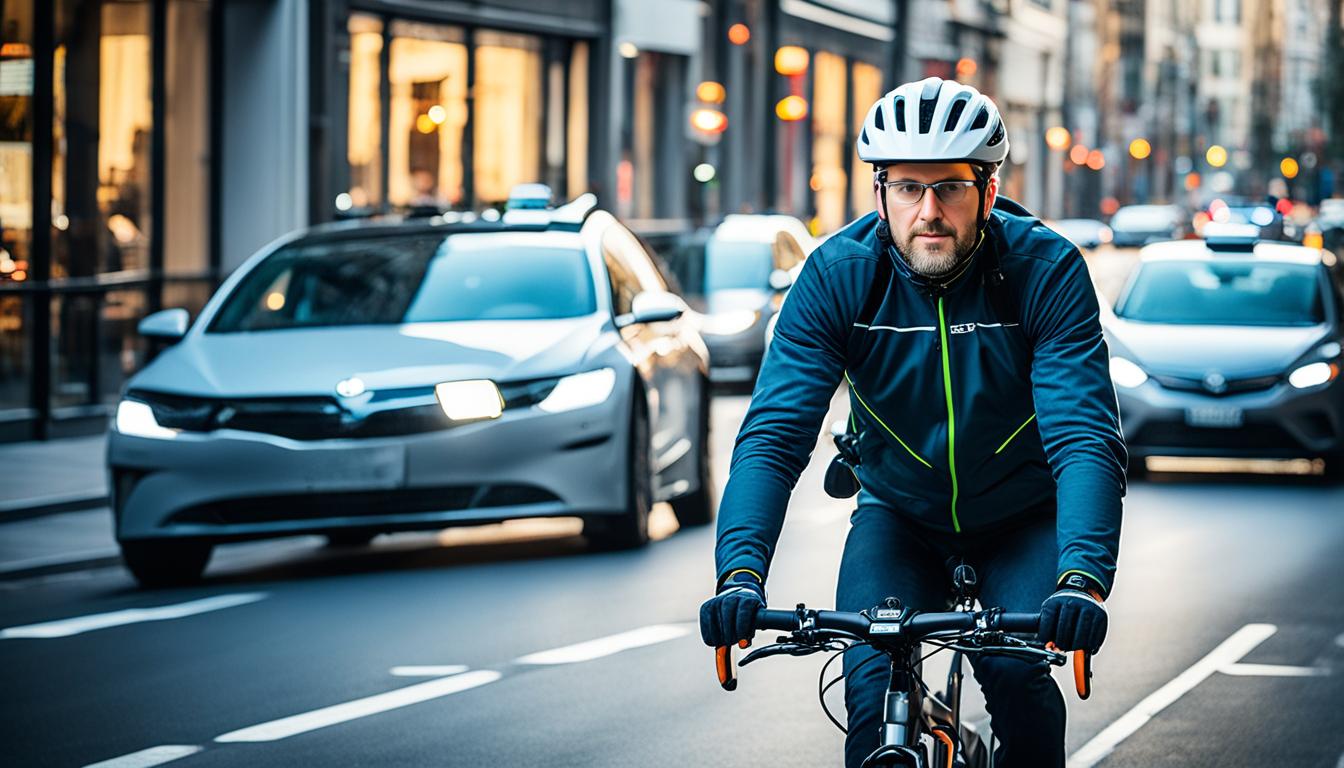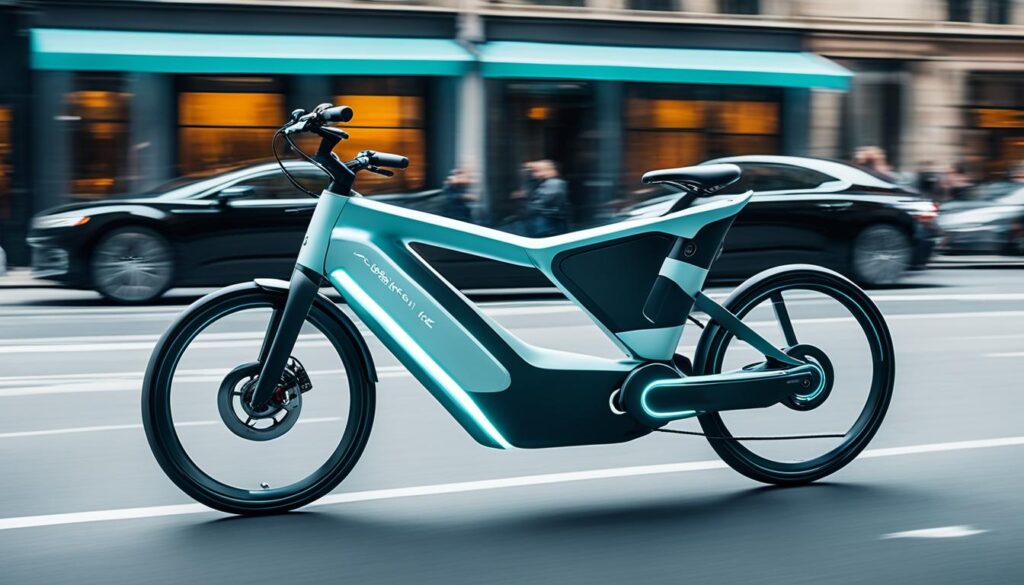Figuring out if your electric bike is okay to ride on the streets involves a bit of homework. There’s a national rule in the U.S. that says an electric bike’s motor can’t be more than 750 watts. Plus, it shouldn’t go over 20 mph on just motor power. Yet, each state might have its own set of rules for e-bikes, like different speed limits.
California and New York, for example, have their specific regulations you need to follow. It’s important to know these rules well. If you don’t, you might face fines or other penalties.
In places like California, New York, Florida, and Alabama, you’re allowed to ride electric bikes on public roads and paths. This is great because it means you can use bike lanes and special paths made for bikes. But remember, you must use your e-bike correctly and follow the laws of where you’re riding.
By understanding the different rules in each state or even county, you can make sure you’re riding your e-bike legally. It keeps you safe and makes sure you’re following the law. This lets you enjoy your e-bike rides without worry.
Understanding Electric Bike Classifications
The electric bike classification system varies by location, impacting where and how e-bikes can be used. In the U.S., 36 states follow a common three-class system.
Class 1 e-bikes assist riders when they pedal, stopping help at 20 mph. These can go on bike paths and multi-use trails.
Class 2 e-bikes, also topping at 20 mph, work with throttle power and don’t need pedaling. They’re often seen like Class 1 regarding where they’re allowed.
Class 3 e-bikes push to 28 mph and usually have speedometers. Their speed limits them from bike paths and requires more rules on roads.
In California and 21 other states, these three classes must be clearly marked on e-bikes. Labels show the class, max speed, and motor wattage. This is key for picking e-bikes for different places.
Yet, 14 states have their own rules without a formal system. Helmet laws differ – some states need them for all, some don’t. And, where you can ride varies too. States like Colorado are testing how e-bikes do on trails to see their effect.
Countries like the UK, EU, Australia, New Zealand, and Canada set their own e-bike laws. They often look at motor power and how fast the bikes can go. Knowing local laws is very important because of these differences.
| Location | Class System | Helmet Requirement | Allowed Areas |
|---|---|---|---|
| United States | Yes (36 states) | Varies by state and class | Roads, Bike Lanes, Multi-use Trails (Varies) |
| California | Yes | Varies by class | Roads, Bike Lanes |
| United Kingdom | No | 14 years or older; helmets required for EAPCs | Roads, Bike Paths |
| EU | No | Dependent on the country | Roads, Bike Paths |
| Australia | No | 16 years or older; helmets required | Roads, Bike Paths |
| New Zealand | No | 14 years or older; helmets required | Roads, Bike Paths |
| Canada | No | 16 years or older; helmets required | Roads, Bike Paths |
Federal and State Regulations for E-Bikes
Federal law sees an electric bike as one with up to 750 watts of power. It also should not go over 20 mph on motor power alone. While these rules set a standard, state laws can add more details. Riders must follow both levels of regulations to ride legally.
States have their own rules on e-bike speeds and classes to keep everyone safe. For example, 37 states use a system that divides e-bikes into three groups. These groups are based on how fast they go and how they use power. Both Class 1 and Class 2 e-bikes have a limit of 20 mph. Class 2 bikes have a throttle, and Class 1 bikes help when you pedal. Class 3 e-bikes can go up to 28 mph and you have to be 15 to ride one.
- New York sets different speed limits for Class 3 e-bikes in big cities and limits their use in some places.
- Alaska requires a license but not registration or insurance for e-bikes.
- Hawaii asks for e-bikes to be registered and riders to be at least 18.
- Kentucky and Montana don’t ask for helmets or set an age limit.
- Massachusetts makes riders wear helmets and be at least 16 years old.
- Oregon lets e-bikes on bike paths but not sidewalks.
Adding to the mix, 11 states don’t clearly define what an e-bike is, and another 11 have their own classifications. This mix of rules means e-bike owners must really understand both federal and their own state’s laws. This ensures they ride legally and enjoy their e-bikes fully.
It’s very important to stay up-to-date, as laws can change. Following both federal and state rules helps e-bike riders enjoy their bikes lawfully. They can make the most of electric biking, knowing they meet all legal standards.
How to Ensure Your Electric Bike is Street Legal
To make your electric bike street legal, learn about its requirements. Follow both federal and state laws closely. At the federal level, your e-bike’s motor should not be over 750 watts. It should also not go faster than 20 mph on its own. This makes your electric bike okay to ride in bike lanes and on public roads.
States like California, New York, and Florida let people ride e-bikes on public roads and paths. But, you must follow their specific rules. For example, California has three e-bike categories: Class 1, Class 2, and Class 3. Each has different speed limits and ways they can operate.
Class 1 e-bikes need you to pedal to get motor help and go up to 20 mph. Class 2 e-bikes also have a 20 mph limit but can move with a throttle without pedaling. Class 3 e-bikes can go up to 28 mph and need a speedometer. If your e-bike doesn’t fit these classes, you might have to register it as a motor vehicle.
In the UK, e-bikes that don’t meet the EAPC criteria are seen as mopeds or motorcycles. You must follow those specific rules. EU law says an e-bike can have a motor up to 250 watts. It also shouldn’t go faster than 25 km/h without pedaling.
Staying up-to-date with e-bike laws is important. Breaking these laws can lead to fines or worse. If your e-bike is too powerful and not registered, you could be in trouble for not having a license or insurance.
To stay legal, e-bike owners should:
- Regularly check the local laws for any changes.
- Make sure your e-bike does not exceed 750 watts and a 20 mph speed limit.
- Have working pedals and the right safety equipment on your e-bike.
- Think about registering and insuring your e-bike if it goes beyond the usual categories.
By knowing and following the laws for e-bikes, you can safely enjoy your rides. At the same time, you help make the roads safer for everyone.
Licensing, Registration, and Insurance
Understanding electric bike licensing, electric bike registration, and electric bike insurance is crucial. In Michigan, e-bikes are sorted into three types: Class 1, Class 2, and Class 3. Riders in Michigan don’t need a driver’s license, registration, or insurance for e-bikes. But, laws can vary by state.
Class 1 e-bikes are allowed on many paths without special permission. However, Classes 2 and 3 may need local permission. This affects those following local electric bike licensing laws. Also, Class 3 e-bike riders under 18 must wear helmets. Plus, riders under 14 cannot use these bikes alone.
Insuring e-bikes is optional but smart. It can cover theft or damage. Knowing and following local electric bike registration rules is key to lawful use.
Mopeds in Michigan have different rules. They must be registered and display a decal. Riders 15 and up can get a moped license without a driver’s license. Mopeds only need insurance if they go over 30 mph and are considered motorcycles.
Staying up-to-date with e-bike laws is important. It helps riders enjoy their e-bikes safely and legally. Follow electric bike licensing, electric bike registration, and electric bike insurance rules for the best experience.
Electric Bike Safety Standards
It’s important that electric bikes meet safety standards for legality and the rider’s well-being. Riders can have a safer experience by following specific rules. One important rule is the Consumer Product Safety Act. This act requires electric bikes to have necessary safety features like working pedals and brakes.
In Europe, the standard known as EN 15194 defines pedelecs. These are electric bikes with motor power up to 250 watts and a top speed of 25 km/h. By meeting EN 15194 standards, these bikes are seen just like normal bicycles. This means no need for a license, registration, or insurance. In the United States, electric bikes must not exceed 750 watts and 20 mph. This keeps them classified as normal bicycles too.
Different countries have different rules about wearing helmets. For example, in Australia, wearing a helmet is a must. In Canada, riders over 16 need helmets. Meanwhile, in the United States, helmet laws change depending on the state. Massachusetts, for instance, requires all e-bike riders to wear helmets.
Making sure you follow these safety standards is crucial. It’s about following the law and keeping safe. Riders should know their local laws and ensure their e-bikes are up to par. This means having good brakes, working lights, and following motor power and speed limits. Whether it’s federal laws or the EN 15194 standard, being informed is key.
Conclusion
Understanding e-bike laws is key to enjoying your ride. Different rules about motor power, how you can use it, and speed limits exist. Knowing these laws helps you ride without breaking them. E-bikes are split into Class 1, Class 2, and Class 3. Each class has its own rules for where you can ride, what safety gear you need, and if you need a license.
Take the HOVSCO™ HovAlpha 26″ Step-Thru Fat Ebike, for example. It’s a Class 3 e-bike with a 750w motor and can go up to 28 mph. But riding safely isn’t just about the e-bike’s features. It means following road rules, wearing the right safety gear, and watching out for others to avoid accidents.
As an e-bike owner, you must know your local laws. These can be different across states or even towns. Your e-bike should fit the federal rules, like having a 750 watts motor at most and not going over 20 mph on motor power. Following these local and federal rules keeps you from getting fined.
Different countries like the UK, EU, and Australia have their own e-bike rules, especially about motor power and how fast you can go. In places like the US, Canada, or New Zealand, wearing helmets is part of following these laws. When we all stick to these rules, e-bikes become a safe, lawful way to travel. This way, we can enjoy their benefits for both daily commutes and fun.
Additional Resources
If you’re looking into electric bike laws or safety tips, many resources can help. There’s a handy guide that compares the laws in different states. It’s useful for knowing your local regulations.
In 2019, the Electric Bicycle Summit shared new insights on e-bike rules. You can watch a video summary of the summit’s key points. There’s also a study on programs that support e-bike users.
PeopleForBikes is pushing for e-bikes to have the same rights as traditional bikes. They focus on making sure e-bike riders follow the rules and stay safe. For example, in Texas, you need to know the helmet laws and make sure your bike has the right lights.
Many resources, from forums to official guides, are available to e-bike users. Government sites offer the latest on laws in each state. By staying informed, you can make sure your e-bike rides are both thrilling and within the law.



